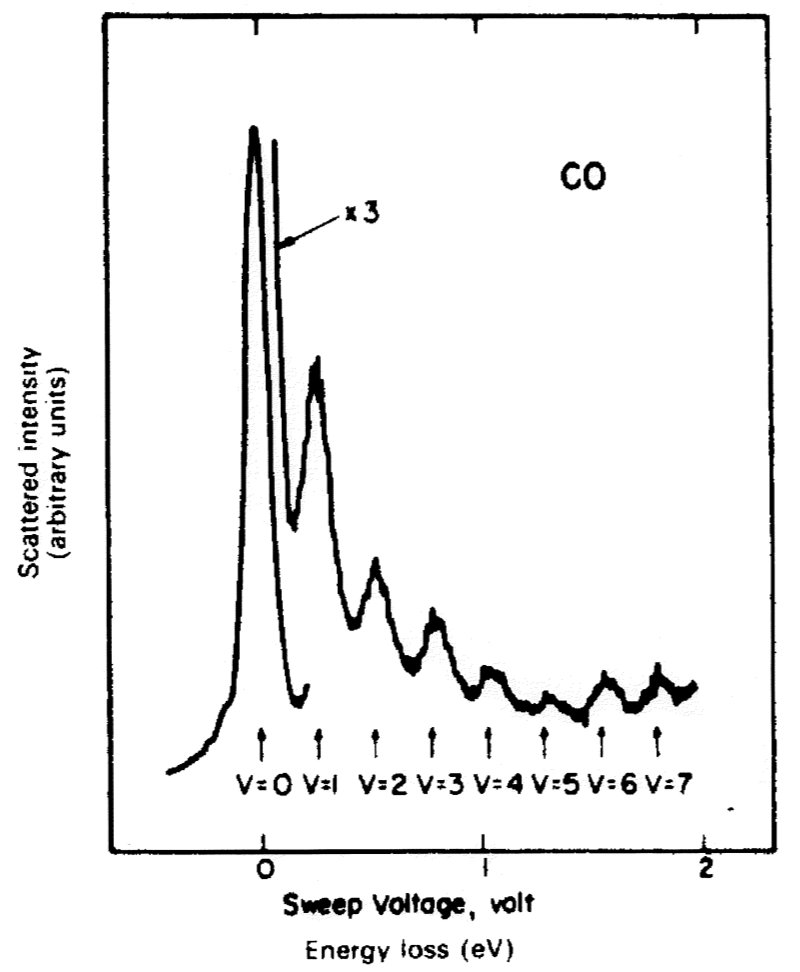Physics 309
The Configurations of Carbon Monoxide
The excited states of the diatomic molecule carbon monoxide (CO) can be
observed by crossing a beam of electrons with another beam consisting
of carbon monoxide.
The energy spectrum of the scattered electrons is displayed below.
If the potential energy between the two atoms is truly a harmonic
oscillator potential, then the energies of the excited states can be
represented by
A rough measure of the range of oscillation of the CO molecule
is provided by the classical amplitude.
What is the classical amplitude of the molecule we are studying here
in the n=2 state?
How does your result compare with the typical CO inter-molecular
separation of about ![]() ?
We often treat molecules as if they were made of atoms rigidly held in
place by sticks.
For those who took organic chemistry, recall the tinker toys you used
to study the configurations of different molecules.
What, if anything, do the results here have to say about our tinker toy
model?
?
We often treat molecules as if they were made of atoms rigidly held in
place by sticks.
For those who took organic chemistry, recall the tinker toys you used
to study the configurations of different molecules.
What, if anything, do the results here have to say about our tinker toy
model?
